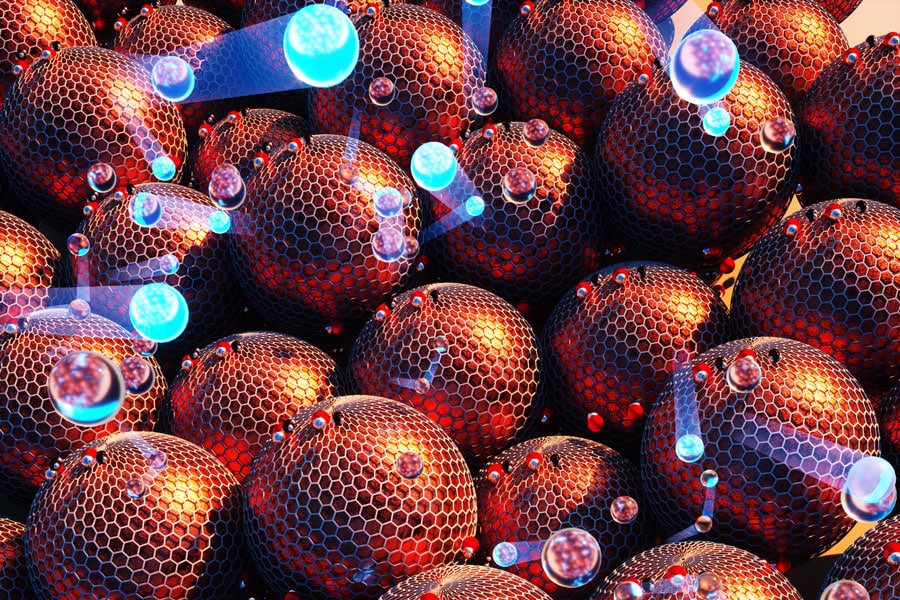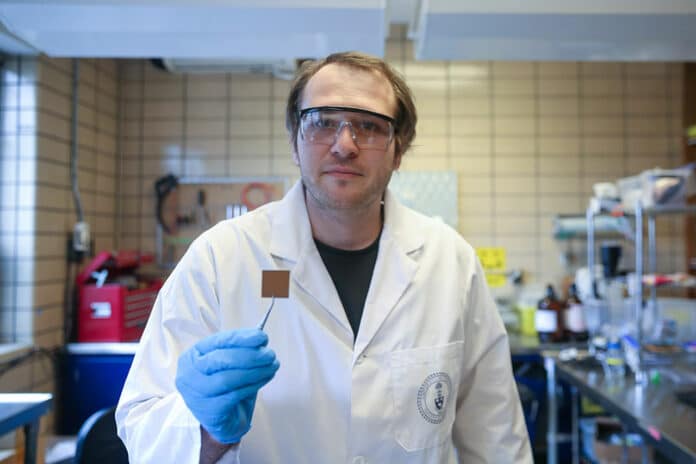The electrolysis of carbon dioxide (CO2) and carbon monoxide (CO) provides a means to convert emissions into multicarbon products such as ethanol and ethylene. However, impractical energy and carbon efficiencies limit current systems.
Now, researchers at the University of Toronto’s Faculty of Applied Science & Engineering have developed a new catalyst design that could significantly improve the practicality of an electrochemical process.
In their work, researchers focused on a variant of the process known as “cascade CO2 reduction.” In this process, the CO2 is first dissolved in a liquid electrolyte and then passed through an electrolyzer, where it reacts with electrons to form carbon monoxide. The CO is then passed through a second electrolyzer, where it is converted into two-carbon products such as ethanol, which is commonly used as fuel, and ethylene, which is a precursor to many types of plastics as well as other consumer goods.
In the second step, the team found inefficiencies they believed could be overcome. The challenges were related to selectivity, which is the ability to maximize the production of the target molecules by reducing the formation of undesirable side products.
“One of the key issues is the poor selectivity under low reactant availability,” says post-doctoral researcher Adnan Ozden, one of four lead authors of the new paper. “This, in turn, leads to a trade-off between the energy efficiency – meaning how efficiently we use the electrons, we pump into the system – versus the carbon efficiency, which is a measure of how efficiently we use CO2 and CO.”

On investigating the reasons for this trade-off, the team found that it originates from excessive accumulation of the positively charged ions, known as cations, on the catalyst surface, as well as the undesirable migration of the negatively charged ions, known as anions, away from the catalyst surface.
To overcome this challenge, they took inspiration from the design of supercapacitors. They added a porous material, called a covalent organic framework, onto the surface of the catalyst, which enabled them to control the transport of cations and anions in the local reaction environment.
“With this modification, we obtained a highly porous, highly hydrophobic catalyst layer,” says former post-doctoral researcher Jun Li, another of the lead authors. “In this design, the covalent organic framework interacts with the cations to limit their diffusion to the active sites. The covalent organic framework also confines the locally produced anions due to its high hydrophobicity.”
Using the new catalyst design, the team built an electrolyzer that converts CO into two-carbon products with 95% carbon efficiency while also keeping energy efficiency relatively high at 40%.
The technology still needs improvement if it’s to be adapted commercially. During the tests, the prototype device maintained its performance for more than 200 hours, but it will need to last even longer for industrial use.
Journal reference:
- Adnan Ozden, Jun Li, Sharath Kandambeth, Xiao-Yan Li, Shijie Liu, Osama Shekhah, Pengfei Ou, Y. Zou Finfrock, Ya-Kun Wang, Tartela Alkayyali, F. Pelayo García de Arquer, Vinayak S. Kale, Prashant M. Bhatt, Alexander H. Ip, Mohamed Eddaoudi, Edward H. Sargent, and David Sinton. Energy- and carbon-efficient CO2/CO electrolysis to multicarbon products via asymmetric ion migration–adsorption. Nature Energy, 2023; DOI: 10.1038/s41560-022-01188-2
